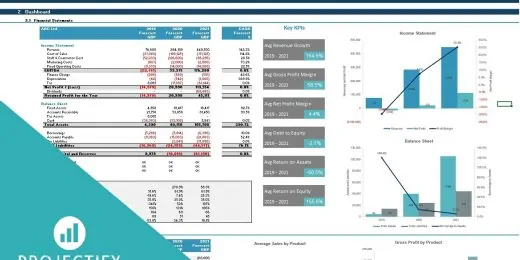Explore Best Practices With Financial Terms Definition

Understanding best practices with financial terms definition is crucial for financial literacy. Quick and clear explanations enhance comprehension and decision-making.
Grasping the fundamentals of financial terms is key to navigating the complex world of finance. A well-rounded introduction to these is not just about jargon busting; it’s about empowering individuals with the knowledge to make informed financial decisions. By leaning into best practices, you ensure that your grasp on financial concepts is solid and that the terminology becomes a tool rather than a barrier.
The focus lies on demystifying the language of finance, giving you the confidence to engage with financial discussions, read reports, and analyze markets effectively. Ensuring a firm understanding of financial terms paves the way for better financial management and savvy investing for professionals and personal finance enthusiasts alike.
The Importance Of Clear Financial Terms
Understanding financial terms is vital. It helps people make informed decisions. Clear financial language bridges gaps. It boosts confidence and aids growth.
Bridging Expertise And Understanding
Experts use complex financial language. This can confuse non-experts. Clear terms turn complicated ideas into easy concepts. Everyone gains the same understanding.
- Simplicity: Complex terms in simple language.
- Clarity: Each term defined with no ambiguity.
- Accessibility: Information opens doors for all.
Enhancing Financial Literacy
Financial literacy is key to personal growth. Knowing terms helps people control their finances. This leads to better budgeting, investing, and saving.
Components Of Well-defined Financial Terms
Welcome to the essential guide on Components of Well-Defined Financial Terms. A clear understanding of financial terminology is critical. It allows individuals and professionals to make informed decisions.
Precision And Clarity
Precision and clarity are foundational in financial communications. Terms must be unmistakable. Each term should convey a single, clear meaning. Ambiguities can lead to costly misunderstandings. Well-defined financial terms help in comparing data accurately. They prevent confusion. Words like “revenue” and “income” should not be used interchangeably. Their definitions are distinct. Financial experts must articulate definitions that leave no room for doubt. This ensures a uniform understanding.
Contextual Use And Examples
Context is key for comprehending financial jargon. Terms take on specific meanings within contexts. For instance, ‘liquid assets’ may have different implications for investors and accountants. Real-world examples enhance understanding. They illustrate how terms function in practical scenarios. Imagine describing ‘amortization’. A table showing periodic payment breakdown helps clarify this concept.
Additional rows can be added to show the full schedule
| Payment No. | Interest | Principal | Remaining Balance |
|---|---|---|---|
| 1 | $150 | $500 | $9,500 |
An engaging definition incorporates examples. Consider explaining ‘equity’. Start by defining it as the value of an investment in a property after debts are subtracted. Then, present a bullet list showing different kinds of equity:
- Home equity – Value in a home beyond the mortgage amount
- Stockholders’ equity – Value of shareholders’ investment in a company
- Brand equity – Value of a brand’s reputation and recognition
Common Financial Terms Demystified
Understanding financial terms is key to navigating the complex world of finance. Whether you’re starting a business, investing, or simply managing personal finances, knowing these concepts is essential. The section ‘Common Financial Terms Demystified’ seeks to clear up any confusion, breaking down jargon into clear, simple explanations. Let’s dive into some fundamental terms: assets, liabilities, equity, and debt.
Assets And Liabilities
Assets represent what you own. These include cash, investments, property, and goods. They are resources expected to bring future benefits. Liabilities, on the other hand, are what you owe. This refers to debt, loans, mortgages, and any other financial obligations. Understanding your assets and liabilities is crucial for financial health.
| Asset Types | Liability Types |
|---|---|
| Cash and bank accounts | Credit card debt |
| Real estate | Loans |
| Stocks and bonds | Mortgages |
Equity And Debt
Understanding equity and debt shapes how businesses fund operations. Equity refers to ownership. For example, buying stocks in a company gives you a piece of it. For businesses, equity includes funds from owners and investors. Debt, like loans or bonds, is money borrowed and must be repaid with interest. It helps fuel growth but requires careful management.
- Equity equals ownership interest in assets after debts.
- Debt reflects borrowed money, carrying risk and opportunity.
A Deep Dive Into Investment Vocabulary
Learning investment terms helps you make smart choices with your money. Let’s understand key words like stocks, bonds, and mutual funds. They are like pieces in a money-growing puzzle. When you know them, you’re ready to win in investing.
Stocks, Bonds, And Mutual Funds
Stocks are shares in a company. If you own stocks, you own a piece of that company. The value can go up or down based on how the company performs and other market factors.
Bonds are like a loan you give to a company or government. In return, they pay you back with interest. Bonds are usually safer than stocks but might offer lower returns.
Mutual Funds are a mix of many investments. A professional manager picks stocks, bonds, and other assets to create the fund. You can invest in many areas by buying just one mutual fund.
Understanding Portfolio Diversification
Diversification means spreading your money across different investments. It’s like not putting all your eggs in one basket. A good mix can help lower your risk if one investment doesn’t do well.
- Stocks bring growth potential.
- Bonds add stability with regular interest payments.
- Mutual Funds offer an easy way to diversify.
A balanced portfolio includes different types of assets. This balance can protect your money and help it grow over time. Each person’s best mix is unique, like a fingerprint.
Navigating Tax Terminology
Taxes can be complex. We face various terms and concepts during tax season. Understanding these is key to better finance management. We’ll simplify the complicated tax jargon for you. Let’s dive into the world of tax deductions, credits, and taxable income. Grasp these, and you’ll manage taxes like a pro.
Common Tax Deductions And Credits
Tax deductions and credits reduce your tax bill. They are essential pieces of your tax puzzle. Here’s a breakdown:
- Charitable Donations: Money given to charity may lower taxes.
- Mortgage Interest: Interest paid on a home loan is often deductible.
- Education Expenses: Some costs for schooling can be claimed.
Remember, deductions lower your taxable income. Credits give you a direct tax cut.
Taxable Income Explained
Understanding taxable income is crucial. It’s what’s left after adjustments, deductions, and exemptions. It’s the figure your taxes are based on.
| Income Type | Is It Taxable? |
|---|---|
| Wages | Yes |
| Interest | Yes |
| Gifts | Often No |
All income, like wages and interest, must be reported. Some, like certain gifts, may not be taxed. Know the difference and plan your finances better.
Banking Terms Everyone Should Know
Understanding banking terms can be like learning a new language. But it’s simpler than you might think. From managing daily finances to planning for the future, grasping these terms is essential. Let’s unpack some key banking concepts.
Checking Vs. Savings Accounts
Think of a checking account as your day-to-day wallet. It’s where your money comes and goes. You use this for purchases, bills, and ATM withdrawals. Funds are easy to access with a debit card or checks.
A savings account, on the other hand, is your financial pillow. It’s for money you want to keep safe and grow over time. Savings accounts often have higher interest rates, meaning your money works for you.
Here are a few key points to remember:
- Accessibility: Checking accounts offer more immediate access to funds.
- Growth: Savings accounts encourage money growth through interest.
Interest Rates And Apr
The term interest rate refers to the cost of borrowing money. It’s a percentage that lenders charge on top of the amount loaned.
APR, or Annual Percentage Rate, includes the interest rate plus other charges. APR gives a fuller picture of borrowing costs across a year. When comparing loans, APR is the key number to look at.
Here’s a simple breakdown:
| Term | Definition | Use |
|---|---|---|
| Interest Rate | Charge on borrowed money | Calculated monthly on loans |
| APR | Yearly cost of a loan | Reflects total annual borrowing cost |
Remember, knowing these terms is vital in making informed financial choices. Dive into your banking with confidence!
Real Estate Finance Jargon Unpacked
Welcome to the world of real estate finance, a place where terms and phrases can sometimes feel like a foreign language. Understanding this jargon is key to navigating the property market, whether buying your first home or investing in real estate. Let’s break down some of the most important concepts you’ll come across on your financial journey.
Mortgages And Refinancing
Mortgages are loans that help people buy property. Refinancing means you get a new mortgage to replace the old one. This can save money with a lower interest rate or help you pay off your house faster. Check out a few key terms:
- Principal: The amount borrowed to buy a house.
- Interest: The cost of borrowing that principal, usually a percentage.
- Fixed-rate mortgage: An interest rate that does not change.
- Adjustable-rate mortgage (ARM): An interest rate that can go up or down.
Property Valuation
Knowing what a property is worth is crucial. Property valuation tells you how much your property or one you’re interested in is worth. Here are terms that come up:
- Appraisal: A professional estimate of a property’s value.
- Market Value: What buyers are willing to pay for a property.
- Assessed Value: Used mostly for taxes, it’s set by an official body.
- Comparables: Prices of similar houses that help in valuation.
The Role Of Technology In Financial Education
Embracing technology transforms how we learn about finance. Tech tools make complicated terms easy. They turn financial education into an engaging experience. Fun meets facts in a digital world. It’s time to explore how.
Fintech Innovations
FinTech shakes up the finance world. It combines finance and technology. This mix leads to amazing tools. These tools help us understand money better. Let’s dive into specifics:
- Apps: Mobile applications simplify banking terms.
- Platforms: Online platforms offer interactive lessons.
- Games: Financial-based games boost learning with fun.
Digital Tools For Learning
Digital tools are key for learning. They offer resources at our fingertips. Here’s a quick look at these tools:
- Interactive eBooks broaden our understanding.
- Videos break down complex topics.
- Quizzes test our knowledge on the go.
With these resources, mastering financial terms becomes easier. They help everyone from kids to adults. It’s learning, redefined for the digital age.
Frequently Asked Questions
What Are Financial Terms?
Financial terms are specialized language used in the finance industry. They include jargon such as interest rates, assets, liabilities, and equity. Understanding these terms is crucial for financial literacy and making informed decisions in business or personal finance.
Why Learn Financial Term Definitions?
Learning financial term definitions helps in making informed investment, savings, and budgeting decisions. It enhances financial literacy, allowing for better communication with financial advisors and understanding of financial documents.
How To Understand Complex Financial Terms?
To understand complex financial terms, start with basic concepts and gradually move to more advanced topics. Use financial dictionaries, educational resources, or consult financial advisors. Practice by reading financial reports or articles.
What Is Asset Allocation?
Asset allocation is an investment strategy that balances risk by distributing investments across different asset categories like stocks, bonds, and cash. It aims to optimize returns while considering an investor’s risk tolerance and financial goals.
Conclusion
Understanding financial jargon is key to making informed decisions. This guide aimed to demystify complex terms, aiding your finance journey. Arm yourself with this knowledge to navigate the economic landscape confidently. Embrace learning; let these definitions be your stepping stone to financial literacy.
Your empowered future starts here.



















































